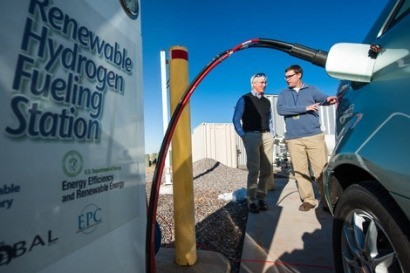
HyperSolar has commented on the recent debut of the 2015 Toyota FCV, a sedan that runs on hydrogen. The vehicle is expected to be capable of an approximate 300-mile range, costing around $50 to $60 (£30 to £36) to refuel. It will join other hydrogen-powered vehicles, including the Hyundai Tucson Fuel Cell and Honda FCX Clarity, as car manufacturers continue to develop hydrogen fuel cell vehicles.
Toyota has stressed the need for large vehicles such as buses and trucking fleets to become more energy efficient and the importance of fuelling infrastructure and production. Meanwhile, product rollouts are increasing rapidly as manufacturers seek to take advantage of market opportunities. In California for example, around 50 hydrogen refuelling stations are expected to be operating by the end of 2016, encouraged by the state’s approximately $200 million in funding from the California Energy Commission.
The expansion of stations has increased the need for hydrogen fuel production and this has given HyperSolar the opportunity to promote its ‘green hydrogen’, which is produced from renewable resources such as wind or solar as opposed to ‘brown hydrogen’ extracted from natural gas. According to a 2014 Union of Concerned Scientists article, at least 33 percent of the hydrogen provided at a company’s California filling stations must come from renewable sources in order to meet the standard. The market for renewable hydrogen is expected to grow because of such measures.
“Toyota and other auto manufacturers’ commitment to hydrogen fuel cell technology further underscores HyperSolar’s opportunity in the market” said Tim Young, CEO of HyperSolar. “As these vehicles are adopted by the masses and require refueling not just throughout California but the entire country, we believe that HyperSolar’s ability to produce hydrogen at or near the point of distribution via a renewable process will provide fueling stations with the support needed to meet consumer demand.”
HyperSolar has developed a breakthrough technology to produce renewable hydrogen using sunlight and water based on the concept of developing a low-cost, submersible hydrogen production particle that can split water molecules using sunlight without any other external systems or resources – acting as artificial photosynthesis.
The Toyota FCV is expected to be delivered to dealerships from mid-2015.
For additional information:

